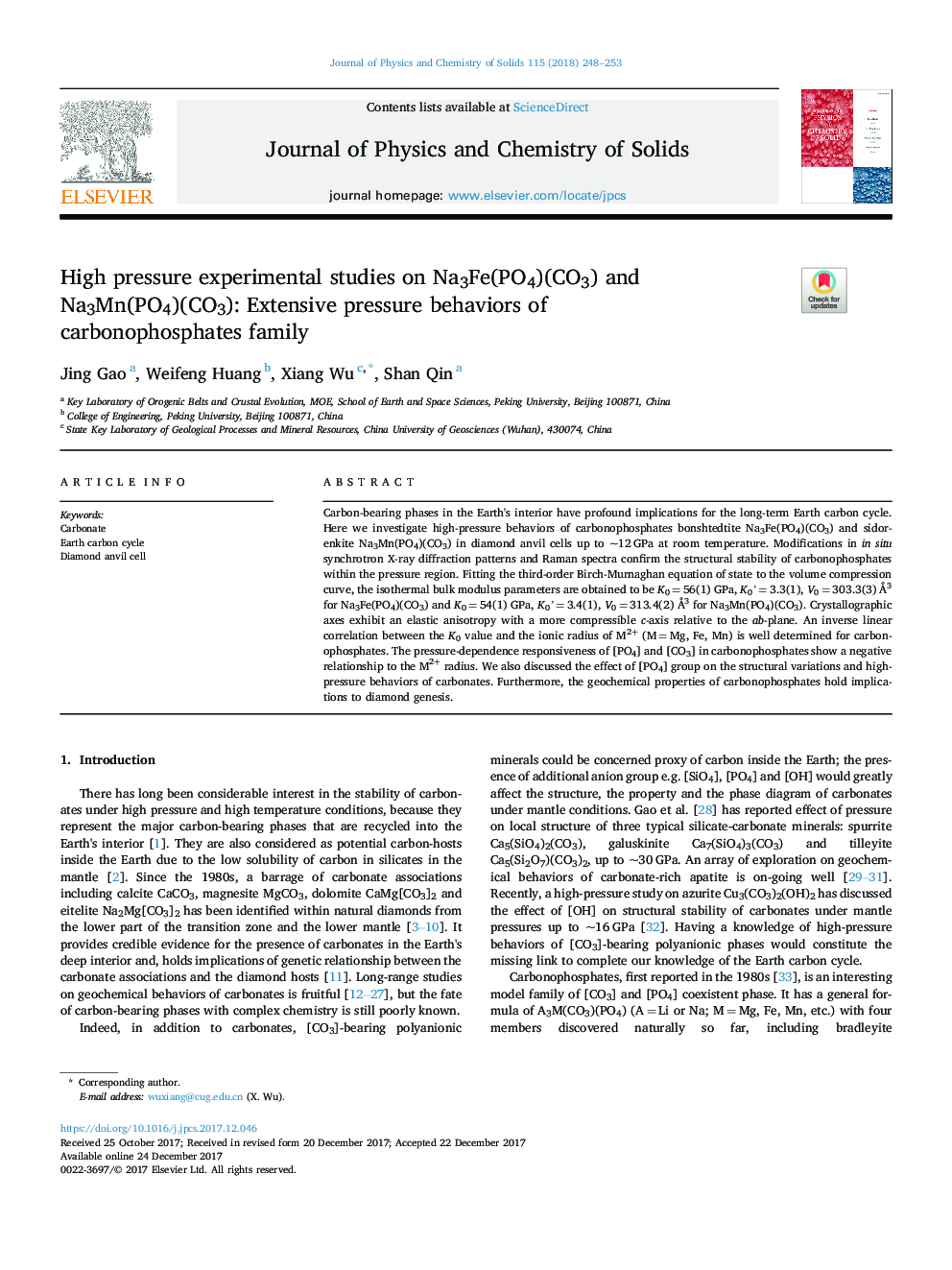| Article ID | Journal | Published Year | Pages | File Type |
|---|---|---|---|---|
| 7920522 | Journal of Physics and Chemistry of Solids | 2018 | 6 Pages |
Abstract
Carbon-bearing phases in the Earth's interior have profound implications for the long-term Earth carbon cycle. Here we investigate high-pressure behaviors of carbonophosphates bonshtedtite Na3Fe(PO4)(CO3) and sidorenkite Na3Mn(PO4)(CO3) in diamond anvil cells up to â¼12â¯GPa at room temperature. Modifications in in situ synchrotron X-ray diffraction patterns and Raman spectra confirm the structural stability of carbonophosphates within the pressure region. Fitting the third-order Birch-Murnaghan equation of state to the volume compression curve, the isothermal bulk modulus parameters are obtained to be K0â¯=â¯56(1) GPa, K0'â¯=â¯3.3(1), V0â¯=â¯303.3(3) Ã
3 for Na3Fe(PO4)(CO3) and K0â¯=â¯54(1) GPa, K0'â¯=â¯3.4(1), V0â¯=â¯313.4(2) Ã
3 for Na3Mn(PO4)(CO3). Crystallographic axes exhibit an elastic anisotropy with a more compressible c-axis relative to the ab-plane. An inverse linear correlation between the K0 value and the ionic radius of M2+ (Mâ¯=â¯Mg, Fe, Mn) is well determined for carbonophosphates. The pressure-dependence responsiveness of [PO4] and [CO3] in carbonophosphates show a negative relationship to the M2+ radius. We also discussed the effect of [PO4] group on the structural variations and high-pressure behaviors of carbonates. Furthermore, the geochemical properties of carbonophosphates hold implications to diamond genesis.
Keywords
Related Topics
Physical Sciences and Engineering
Materials Science
Electronic, Optical and Magnetic Materials
Authors
Jing Gao, Weifeng Huang, Xiang Wu, Shan Qin,
